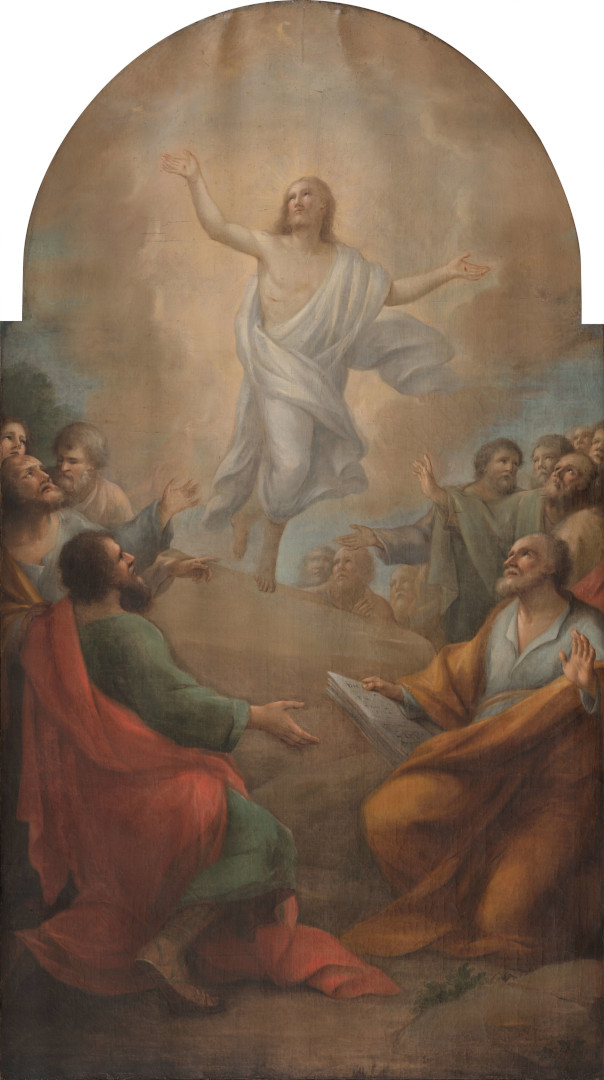Usiamo i cookie in questa webapp.
Alcuni di loro sono necessari per il corretto funzionamento del sito.
Works on the Chapel of the Ascension were completed in 1791, under the direction of the painter Carlo Brunelli and his brother, the sculptor Angelo Maria Brunelli.
The Chapel was officially inaugurated in 1792, with a ceremony officiated by the priest Don Tommaso Calzarano from Aversa, in the presence of Ferdinand IV of Bourbon. The Chapel remained in use until 1936.
On the first of the building's two floors are two tribunes, built to allow the sovereigns to comfortably attend the celebration of Mass. From this perspective, they could admire the elegant cupola decorated with stucco rosettes and the vault with monochrome frescoes by the Florentine artist Carlo Brunelli.
The painter besides being the creator of the altarpiece, the Ascension, worked also on the chiaroscuro figures in the lunettes of the tribune: the Eternal Father with Angels; the Allegories of Eternity, Justice, Wisdom and Mercy; the Nativity and the Flight into Egypt.
The canvas depicting the Ascension was painted in 1788 but delivered in 1794 along with two other works that disappeared in the 1980s, of which only photographic evidence survives.
Regarding the latter, it is known that the first depicted Saint Vitus, protector of agricultural activities; the second depicted the protector of hunting, Saint Hubertus (or Saint Eustace), and was inspired by the Conversion of Saint Hubertus made by Vittorio Amedeo Rapous in 1768, for the antechapel of the King's Apartment in the Stupinigi Hunting Lodge.
The altarpiece dedicated to the Ascension is the fulcrum of the design of the room: a choice probably aimed at pandering to the sovereign's taste.
It was in fact Ferdinand IV who instituted the Festival of the Ascension for the Royal Site of Carditello.
During this festivity, as reported by the poet, playwright, and essayist Salvatore di Giacomo “races of barbarians, horses and mares” were organized “and people flocked there in great numbers”.
Preparations began well in advance and, to encourage participation in the races – which had a cash prize – a large number of posters were already put in all provinces of “Terra di Lavoro” at the beginning of May.
During the festival, which was also attended by the royal family – whose security was taken care of by the infantry guard – even the racetracks were decorated; the gates were decorated with coloured canvases and pickets, ropes and cloths were fixed along the fence to divide the track from the temple, for preventing the invasion of the public.
Finally, the towers served as places of refreshment: generally, a trattoria was set up, while the other rooms were given to artisans, upon request, to sell products such as coffee, bread, liqueurs, and ice cream.
 Quadri
Quadri
The altarpiece Ascension of the Saviour with the twelve apostles was made for th